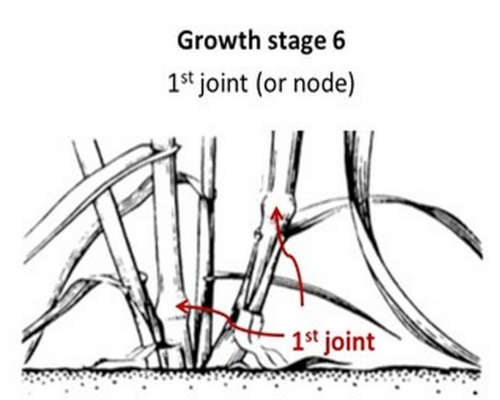By Ricardo Costa and Martin Nagelkirk
The first joint stage is a game-changer in the development and management of wheat—the plants begin to invest in their reproductive phase. The timing is right for growers to gauge their progression of management practices.

Spring is here, and with that, wheat development is progressing as expected. As you scout your fields, you might start to see your wheat crop showing its first node. That first node indicates wheat has reached Feekes Growth Stage 6. In the development of wheat, Feekes Growth Stage 6, also known as first joint, is where plants have progressed beyond the vegetative state, and the real work of producing a crop begins.
Why is this important? Everything before this point has been dedicated to laying a foundation for what begins at jointing when the plant diverts its attention to its ultimate mission: producing seed.
The rate of development for wheat depends primarily on temperature. As for calendar date, the growth stage 6 usually occurs around May 1—give or take five days—in central Michigan, a few days earlier in southern Michigan, and a few days later in northern Michigan. The date of seeding also matters. Generally, wheat sown in September may reach growth stage 6 several days ahead of a crop seeded a month later.
The best evidence of growth stage 6 is a joint (node) emerging above the soil line. This structure represents the developing head above multiple nodes. Eventually, these nodes will separate, all the while pushing the head upward. Before this, growers' management focuses on building the crop's foundation through practices primarily related to seeding and fertilization. From growth stage 6 until grain maturation, the plant is mainly growing and developing. Growers' efforts are primarily restricted to playing a defensive role to stave off potential pests, including weeds, pathogens and insects.